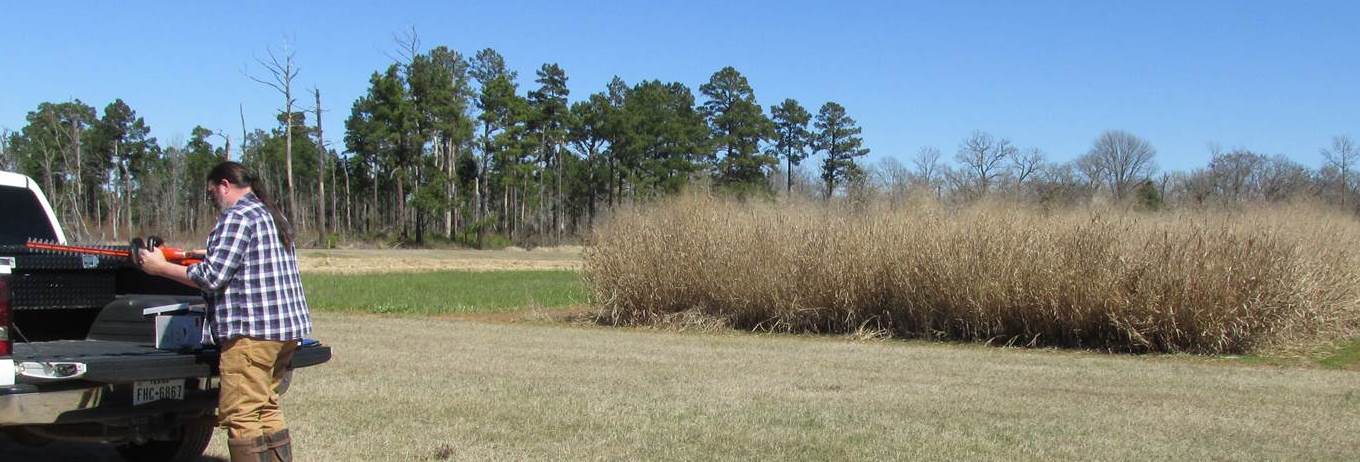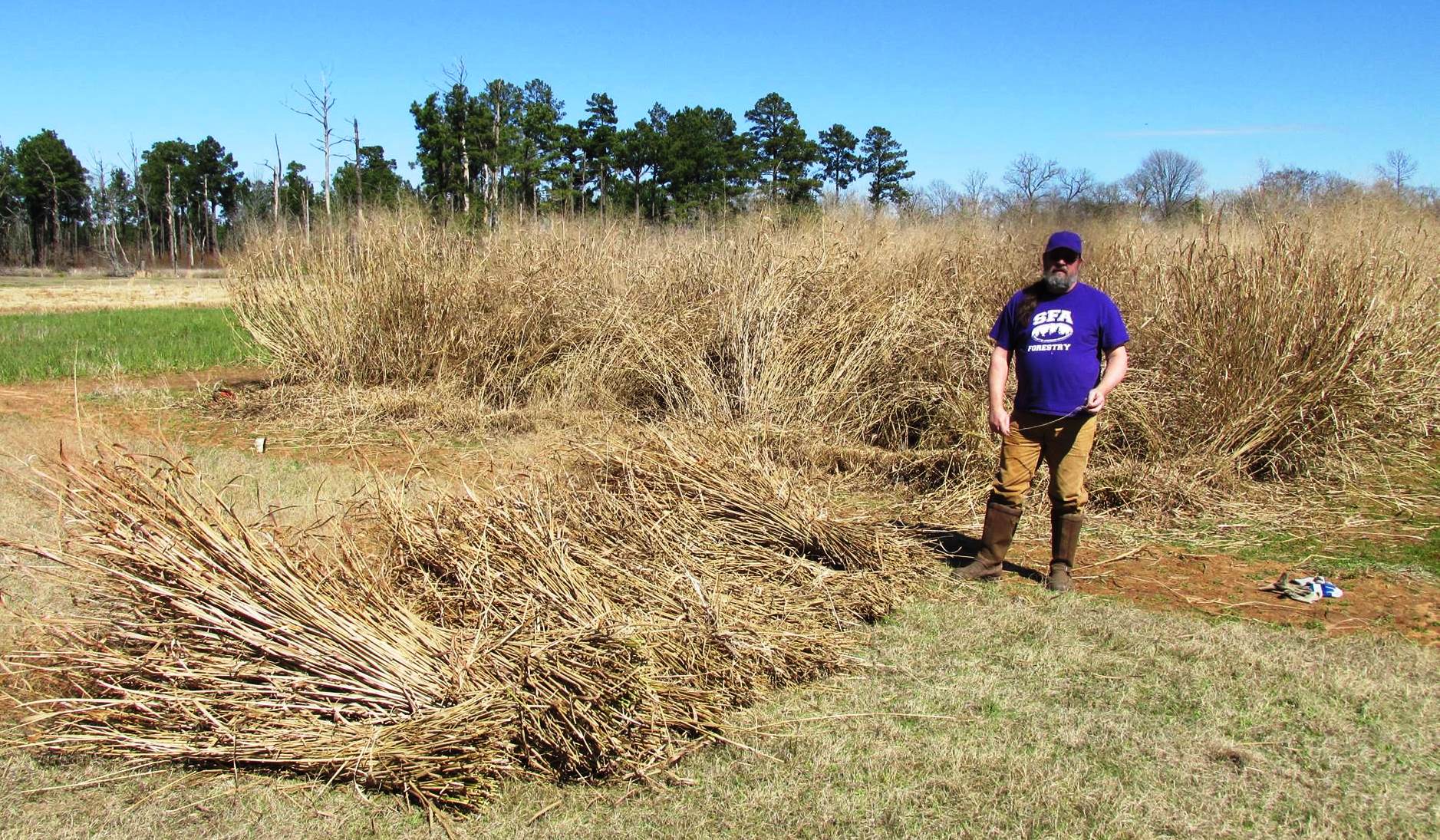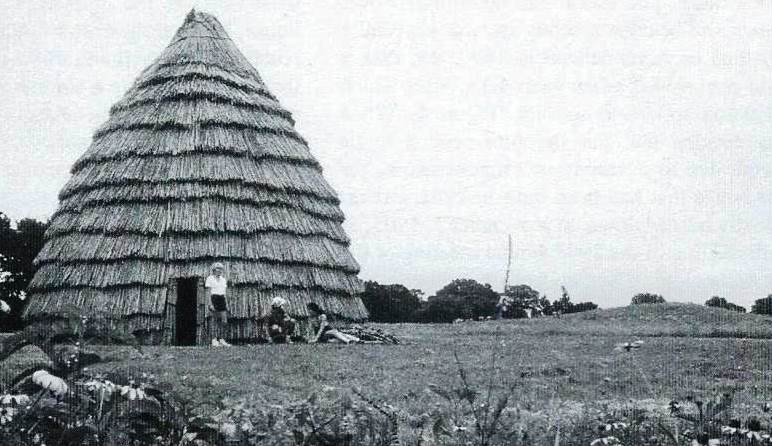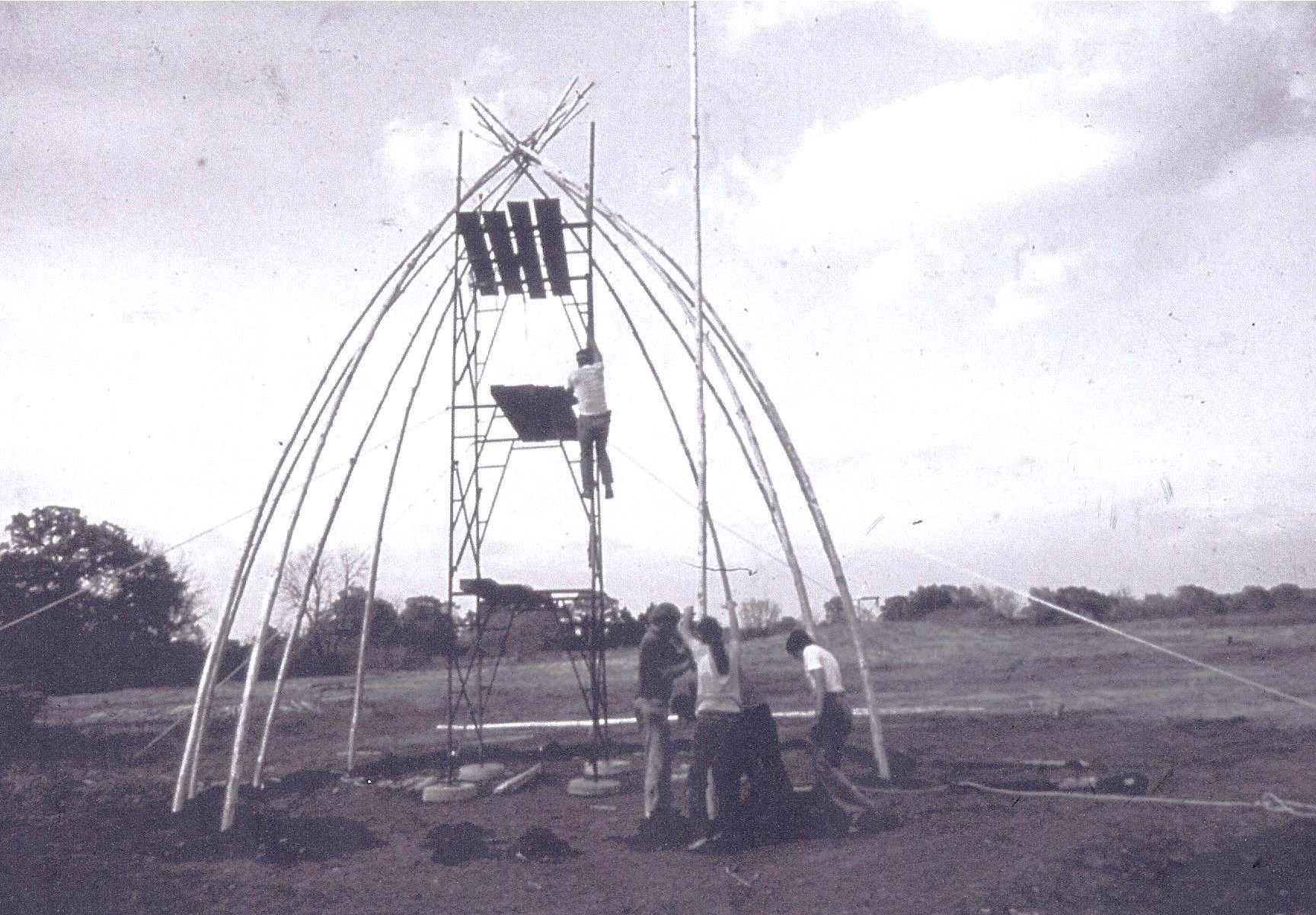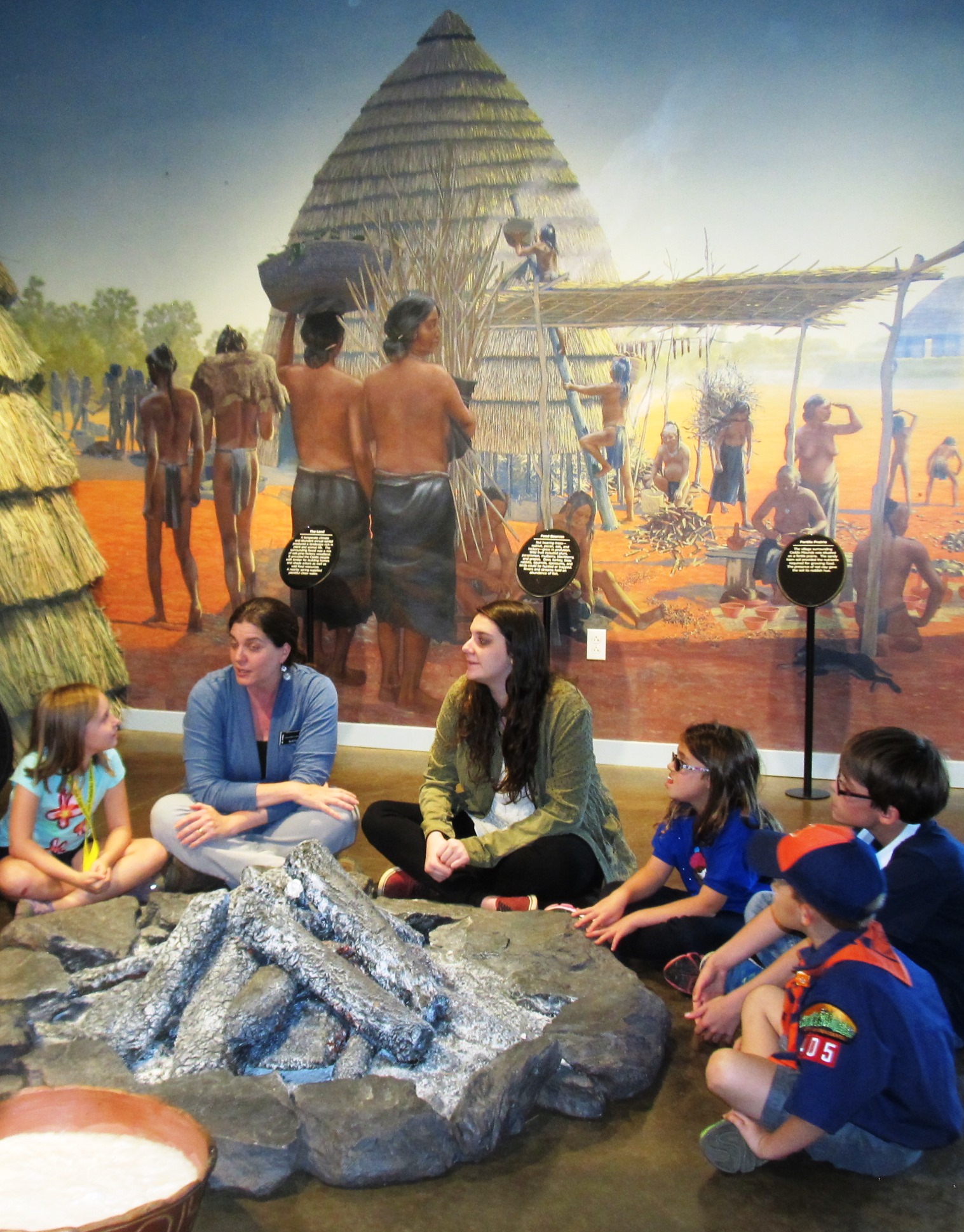Caddo Grass House Will Rise Again
By Deborah Burkett
It's difficult to comprehend what it must have been like living along Highway 21 southwest of Alto between AD 800 and AD 1300. Such an existence would not have included our 21st century amenities. We're spoiled. Electricity affords us heat in the winter and cool air in the hottest part of the year. Rain and thunderstorms, no problem; we have a three bedroom brick home with a solid roof overhead.
Not so with the Caddo Indians known as the Hasinai. They lived in grass houses more than 1,200 years ago on the prairie overlooking the Neches River. Although primitive by today's standards these thatched beehive-like structures protected the Caddos from the elements. The thatching served to keep the interior warm in winter and cool in summer. A fire pit would be located in the center of the house, while beds and living spaces were built around the interior walls. Beds, made of poles lashed together and covered with grass and tanned hides, were raised a few feet off the ground. Shelves were arranged in the upper areas to store baskets of nuts, corn, beans and pottery vessels.
Replicas of these grass houses have been built as "interpretive exhibits" at Caddo Mounds twice in the site's history. First a replica Caddo house stood on site from 1981 to the mid-1990s. But after 15 years it deteriorated beyond repair, so the decision was made to burn it ceremonially per Caddo custom. Caddo from several states attended the ceremony. Organizers put pottery, arrow points and woven baskets inside the house before they burned it. This would provide future archeologists a chance to study the consequences of the burn.
According to Dee Ann Story, important archaeological structures at the site were regularly and purposefully destroyed by fire. Ceremonial use of fire is characteristic of Caddo sites. Early Spanish writers described, "A fire house and ash mound as a place for the keeping of the 'perpetual fire'.
In 1997, a second house was built at a different location by a group of volunteers and the Friends of Caddo Mounds State Historic Site. However it was only partially completed. Work stopped as changes in park personnel occurred. Then in 2000 the house was dismantled but it was not burned.
Good news-A Caddo House will rise again. This exciting archeological adventure is underway thanks to the efforts of the current Caddo Friends Group led by President Jeff Williams, with guidance from Site Manager, Anthony Souter and Educator/Interpreter, Rachel Galan. And you can be involved in this effort too. Join the friends group, volunteer at the site and contribute much needed funds to see this project through to completion.
According to Williams, "…the importance of constructing a realistic Caddo dwelling is, in part, to allow visitors to tangibly see the conditions in which the Caddo of the past lived. Leading to a deeper understanding of their culture…By utilizing Phil Cross, the only living Caddo elder who still knows how to build a traditional grass house, we are incorporating the unique knowledge and invaluable experience of living Caddo people…the grass house would provide continuity with the ancient Caddo peoples and the thriving Caddo Nation of Oklahoma...We want this not only for interpretive reasons but also because we believe in the importance of this being a Caddo heritage site."
Caddo Mounds, known to archeologists as the George C. Davis Site was a regional center of the Caddo for almost 500 years. Then, for reasons unknown, the site was basically abandoned about A.D. 1300.
The first scientific excavations were conducted from 1939 to 1941 by H. Perry Newell, a University of Texas archeologist with the Work Projects Administration (WPA). When Newell died, archeologist Alex D. Krieger took over investigations at the site, and concluded that it had been a major Caddo site. Further excavations in the 1960s and early 1970s by Dee Ann Story pinpointed the timeline of the site. The Texas Parks and Wildlife Department established a historic park in 1974 and in 2008 the Texas Legislature transferred operational control of the property to the Texas Historical Commission.
We're fortunate to have such an historic site in Cherokee County and it behooves all of us to do what we can to preserve it for future generations. Mark your calendar. Attend Caddo Culture Day, April 11th 10 to 3 pm. Meet the Caddo Indians from the Caddo Nation of Oklahoma and enjoy a variety of activities.
The accompanying photographs illustrate past "interpretive exhibits" and speak to the current adventure underway. Caddo elder, Phil Cross, is pictured in two colored photos constructing a Caddo Grass House. The black and white images are from 1981 when Dee Ann Story supervised the Caddo Grass House construction at the Caddo Mounds State Historic Site near Alto, Texas. In the last color photo Educator/Interpreter, Rachel Galan, (second from left) tells stories to children visiting the State Historic Site. Special thanks must also be extended to Victor Galan, PhD Archaeologist / Owner of Deep East Texas Archaeological Consultants. He and Jeff Williams (Technical Coordinator of the Arthur Temple College of Forestry and Agriculture, Stephen F. Austin State University) recently experimented with cutting switch grass at the East Texas Plant Materials Center (ETPMC) which is a U.S.D.A. Natural Resources Conservation Service facility.
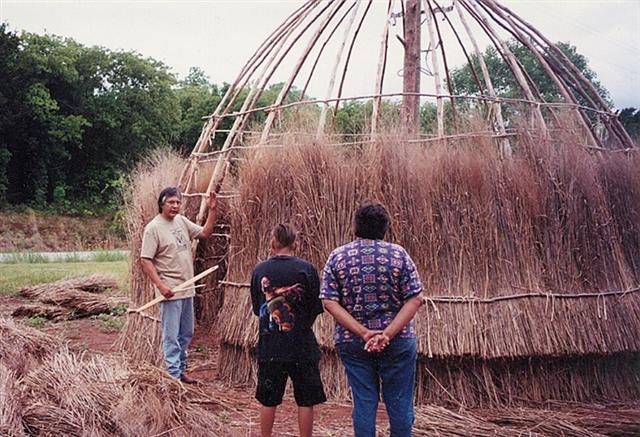
.jpg)
